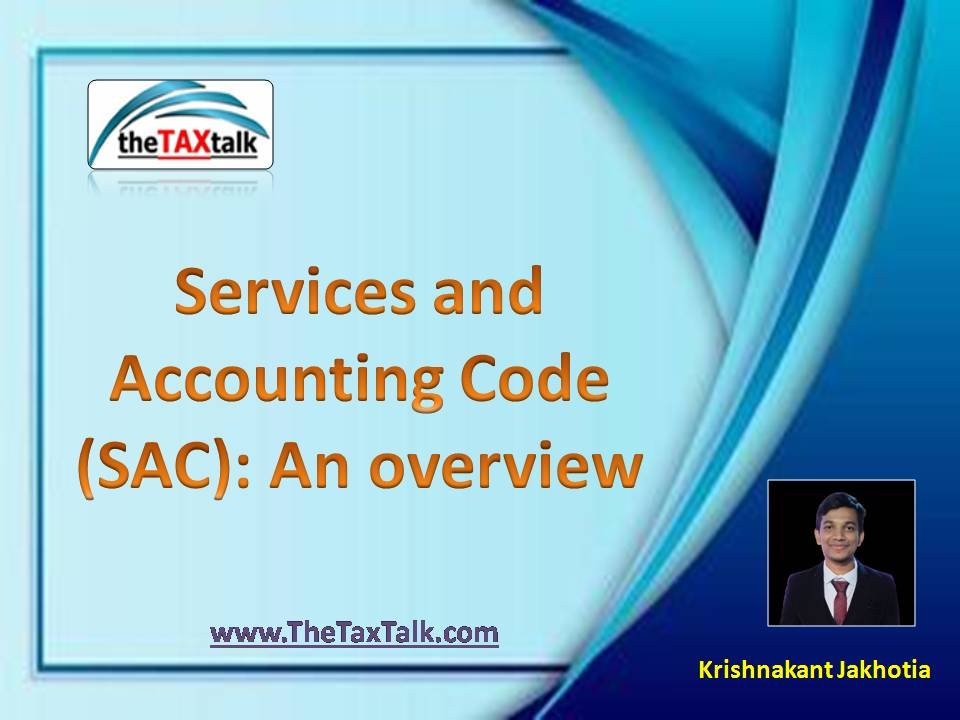![]()
Services and Accounting Code (SAC): An overview
The SAC (Services and Accounting Code) code is a categorization system used by the Indian government to identify and tax different services that businesses perform. The SAC codes are used to determine the kind of service provided and the corresponding GST rate.
SAC (Services and Accounting Code) codes are based on the Harmonized System of Nomenclature, an internationally recognized system for classifying and codifying all the products worldwide. This system enables the compliance of GST based on international standards. It will offer the government with a uniform structure for collaborating and analyzing data connected to sales and purchases. Businesses utilize SAC codes to file GST returns and pay taxes.
What is the SAC number?
A Service Accounting Code, or SAC under GST, is a unique six-digit number used to classify services for taxation purposes. SAC codes are structured to provide information about the nature of the service. They always begin with the number 99, signifying the service category. The subsequent four digits further define the specific type of service.
Breaking up the 6-digit SAC in GST.For example, the SAC forgeneral construction services encompassing single-family homes, multi-dwelling units, and multi-story residential buildings, is 995411
- The first two digits in SAC are the same for all services, i.e., 99.
- The following “54” represents the primary service category, which, in this case, is “construction services.”
- Finally, the unique nature of the primary service, such as “general construction services of buildings,” is specified by the “service code” of 11.
The main difference between the HSN and SAC is that HSN prescribed codes are meant specifically for Goods whereas SAC specifies codes for services. Other difference between both of them is the number of digits in their code and their relevance, for example, HSN code has 8 Digit codes whereas SAC has 6 digit codes.
What is the use of the Service Accounting Code in GST?
The Service Accounting Code (SAC) in GST serves several essential purposes, including:
- SAC codes assign a unique code to each service, making distinguishing and categorising various services easier. This systematic approach helps better classify and track services for taxation purposes.
- They help GST taxpayers identify the GST rate applicable to the services rendered by them.
- GST taxpayers are required to state these SAC codes when they register on the GST portal, on their invoices and in GST returns.
Does SAC code need to be mentioned on the invoice?
As per the GST (Goods and Services Tax) rules, it is mandatory for service providers to furnish the SAC (Services Accounting Code) if their annual aggregate turnover exceeds Rs.5 crore. For businesses earning below Rs.5 crore, a 4-digit SAC code must be furnished for B2B (Business-to-Business) transactions.
This requirement helps properly classify services and ensures that the correct GST rate is applied to the transaction. The SAC code also helps the government to monitor and regulate the collection of taxes and ensure compliance with the GST law.
Businesses with an annual aggregate turnover of up to Rs. 5 crores must mention the HSN (Harmonized System of Nomenclature) code for goods and a 4-digit SAC code for services on their invoices. However, if a business’s turnover exceeds Rs. 5 crores, it must use an 8-digit HSN code for goods and a 6-digit SAC code for services.
From,
Krishnakant Jakhotia
Mobile No :- 9422507911
Email Id :- taxtalknew@gmail.com

